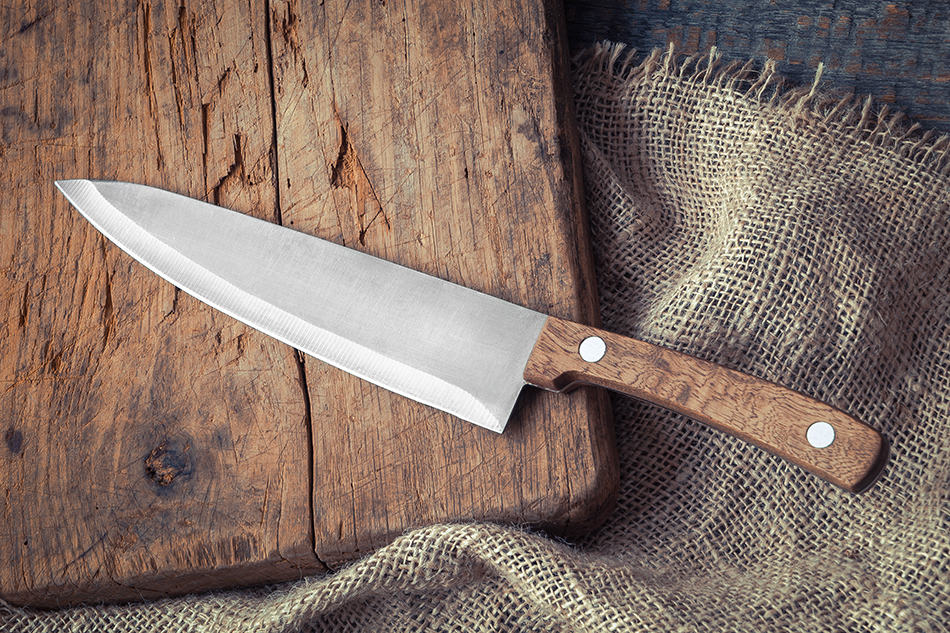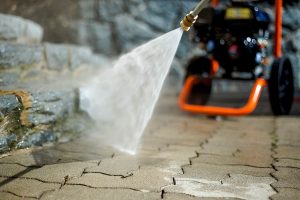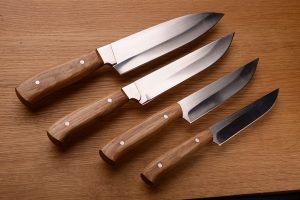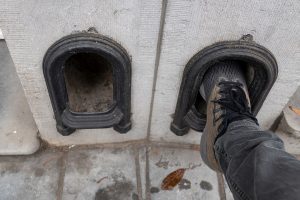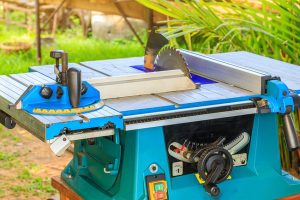Knives come in many different shapes and sizes, depending on what you need them for. There are various knives that are shaped in a certain way to help you in the kitchen, such as cutting, chopping, dicing, slicing, etc.
Furthermore, it is important to know the parts of the knife before considering which one to purchase, in addition to the different types of knives that are commonly used.
We’ll go into detail about the particular components that make up the knife in order to inform you better upon consideration. Depending on the variation of the knife part, this helps define which type of knife you are looking for.
Find below a custom diagram about the anatomy of a knife.
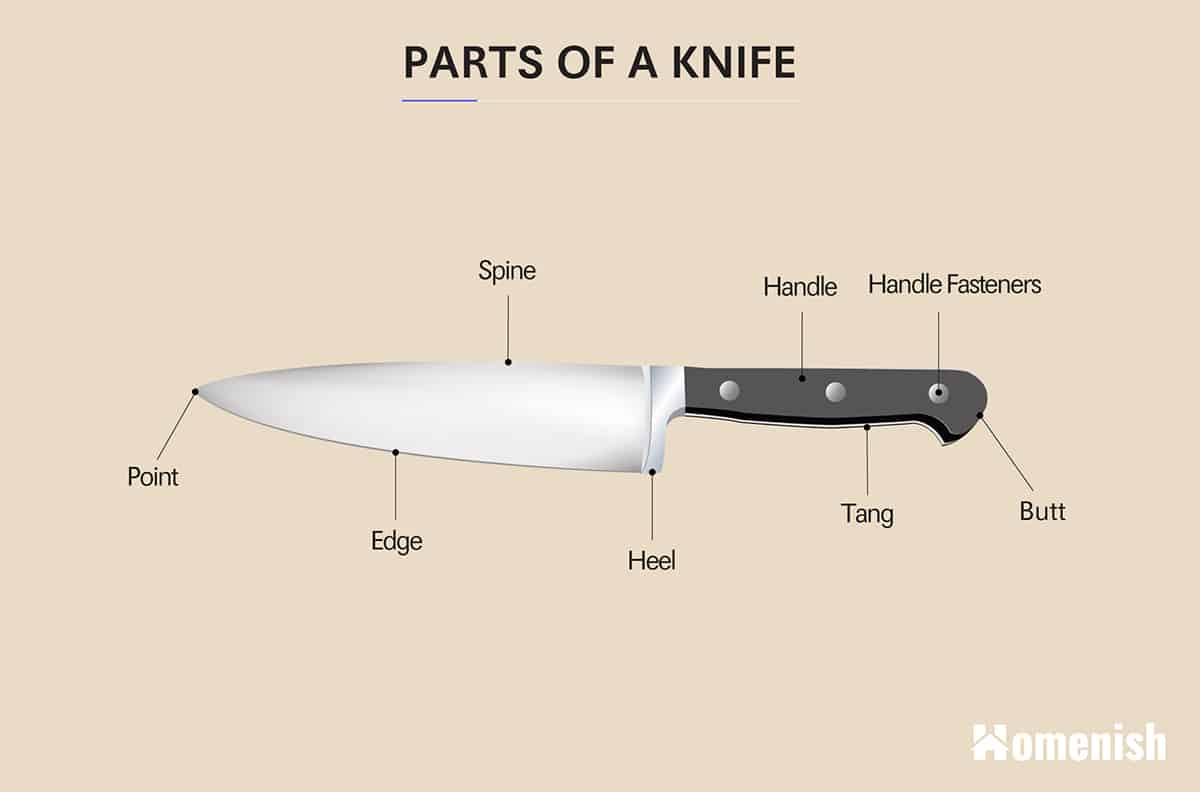
Point
The point of the knife is the furthest from the bottom of the knife, where the blade and spine of the knife meet at the top. Based on the design and shape of the point, this can easily characterize which type of knife it is.
Knives used for cutting and carving have a hawkbill-point, where the edge is concave and shaped somewhat like a claw. If the knife has a spear point, then it is typically used for puncturing holes. If the point is dropping down, such as the hawkbill, the top part is known as the swedge, and when it is sharpened, it is referred to as a false edge.
Kitchen knives have a different kind of the point, called a drop-point or sheepsfoot-point, where the spine of the knife curves smoothly as it approaches the point. It is also crucial to remember that the tip of the knife is not the same as the point due to the tip being the small part of the blade that is located right before the point.
Edge
This is the functional part of the knife, known as the edge. This is the most crucial part which allows the knife to perform its specific task. Edges are curated to fit the purpose of what the knife is used for.
In this case, it is important to know the various types of edges that designate the knife to its certain function. The edge is the sharpened component of the knife that stretches from the point to the blade’s heel. Depending on how the cutting edge is shaped, this is indicated as the blade’s grind.
Hollow-grind is a familiar edge often found amongst chefs, slicing, boning, and pocket knives. This certain edge contains a fine, super sharp edge; however, it is not as powerful since it will not withstand heavy chopping or batoning. It is ideal for a gentle and fluid clean cut and will chip if used for anything that it cannot sever through.
Flat grind edge is, in fact, the preferred edge for heavy chopping, as it is capable of cutting through the cartilage and bone of meat. For more difficult tasks, it can be used; however, if you are looking for a clean slice, it is better to go with the hollow grind. In some cases, a serrated blade can be found with a hollow grind knife which gives more power to slicing tough materials.
Spine and Heel
What differentiates a knife from a dagger is the unsharpened side on the back of the blade. Daggers, however, are sharpened and edged on both sides.
This is the widest part of the blade. The spine’s weight will determine the delicateness of the knife in use due to the balance of the weight between the blade and spine. Knives with heavy blades are designed for chopping; however, they cannot be recommended for slicing. On the other hand, knives with a heavy handle are great for slicing.
Spines also may include an element found along the last inch near the handle where you can place your thumb to assist you in controlling the knife when performing a delicate cut. The bottom of the spine is the heel, known as the widest part, which is placed in front of the handle.
Bolster
This part of the knife, between the handle and the blade/heel, is meant to reinforce the part where the blade meets the handle in addition to serving as a protector that prevents the blade from slipping towards the edge when your hands are slippery.
The bolster is a crucial component of the knife when chopping raw meat or filleting fish because it can be pushed down upon to provide better leverage.
Handle
This is the part of the knife in which you hold in whichever task you are performing in the kitchen. This feature of the knife can be made from many different kinds of materials, such as wood, rubber, plastic, leather, and polymers.
Depending on the handle’s design, it can allow for the facilitation of whichever purpose you are using the knife for. Handles can either be straight or have finger grooves that allow you to grip the knife better when chopping or slicing.
Tang
The tang refers to the section of the blade that the handle connects to. Typically, the knife can either have a full tang or a partial tang. In a full tang, the metal extends towards the end of the handle, yet in a partial tang, the metal extends only halfway.
The main difference between the two is that full tang allows for more force to be applied onto the blade, thus making full tang the popular selection for most knives. Partial tangs are usually found in folding knives since they cannot be made with a full-tang.
Handle Fasteners
These hold the handle to the tang. Usually, this is done by adhering rivets or screws. The cheaper option is using rivets, so, therefore, it is found more often in knives since they are low priced and low maintenance.
However, if they ever fall out of place or you need to change the handle, they are tough to remove. This makes screws another viable option, as they are easy to remove in order to clean the handle or to replace the screws.
Furthermore, it is essential to check and tighten them routinely since they are more likely to come off after use. Nonetheless, this can be solved by using Lock-Tite, by coating the screws when removed and reinserting them after coating.
Butt
The furthest part from the point of the knife, the butt, is the bottom of the handle, which is often curved, which will allow you to find out the blade orientation by simply feeling it. In addition, if the tang uncovers itself out of the backside of the handle, this is referred to as the pommel rather than the butt.
